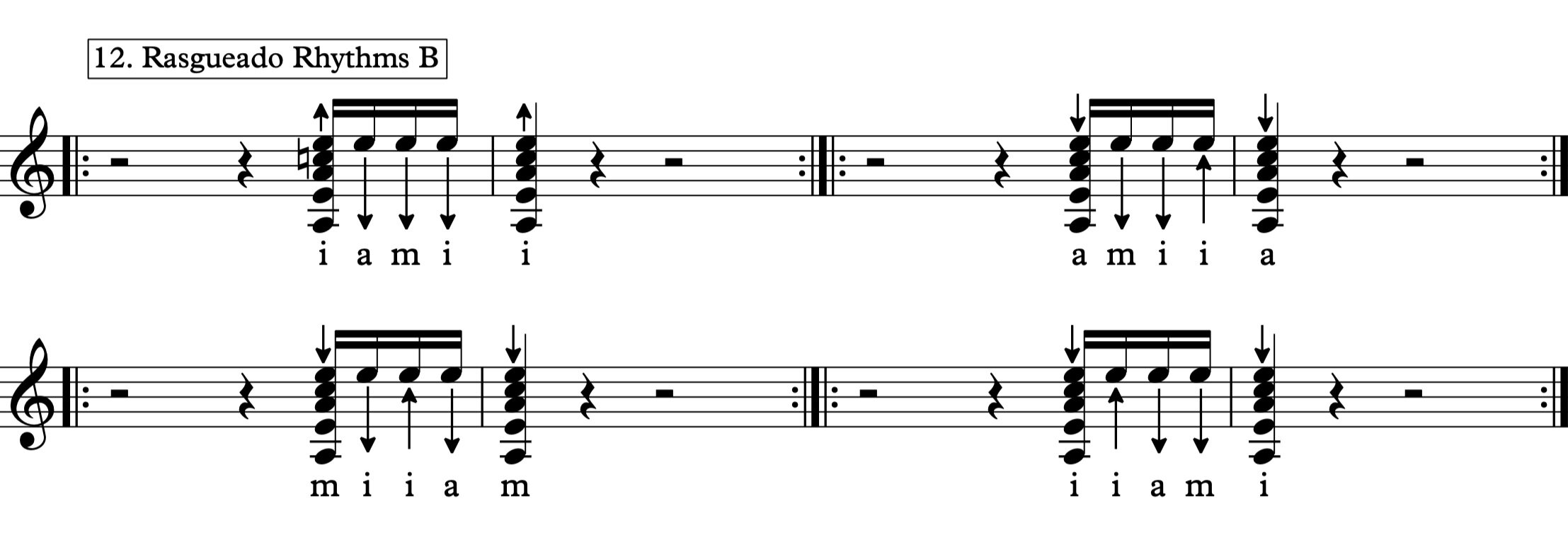30-minute Classical Guitar Warm-up Routine
The main reason for setting up and following a regular warming-up routine before each practice session is to you avoid muscle and tendon related injuries. A successful one will also assist in your technique development and allow you to increase your playing consistency.
Be careful not to overdo it though, you don't want to wear down your fingers before your session even begins. A common mistake among guitar students is to spend most of the practice time with technical exercises, neglecting polishing up repertoire.
By focusing on each exercise for only about 3-4 minutes, alternating hands and focus area, you can manage to tire your fingers just a little, while maintaining physical and mental stamina for the basic work-out.
Additionally, you want to work your fingers on a variety of techniques and movements, to ensure a balanced outcome, with the additional benefit of having worked and polished the basic - and most important - techniques that the classical guitar repertoire requires.
Before you begin, keep in your mind that, accuracy is extremely important. Therefore, practice at a slow and comfortable tempo, stay focused and pay attention to your tone production quality, and efficiency of movement.
ABS: Always Begin Slowly
Start with some of the basic Right-Hand attack techniques on a single string.
Although "im" is mostly used for scales and melodies, a fit “a” (RH) finger, as well as an agile “4” finger (LH), gives overall balance and control to the hand - therefore don’t skip on practising the “ma” variations.
Also, try different strings.
After a few minutes, it is time to let the RH hand rest and concentrate on the LH, slur exercises are very helpful. Pick a scale practice hammer-ons.
Keep all the fingers as close together to the fretboard as possible, and aim for a quick and accurate attack. Slurs are all about accuracy, strength is over-rated.
More RH picking exercises on a single string, this time triplets will guide us to practice sequential attacks with three fingers.
Triplet accenting slurs for the left hand. Make sure that the tone of all three notes is similar - pay attention especially to the pinky as it usually the weakest one.
Its time to introduce string crossings for the right hand, these will prepare your RH fingers for more realistic - real repertoire - requirements.
Practice descending slurs with pull-offs. I like to keep working on the same scale throughout the warm-up routine.
Tremolo is an elusive technique for many guitarists, perform these sequences, and emphasise the first finger to gain more control. Remember, repetition is the key to success.
Left-hand triplet descending slurs. Focus on the pull-offs, each note should have the same volume and tone.
We are all Drummers: when practising right-hand Patterns, like these arpeggio sequences, I usually mute the strings with my left hand, to better judge the accuracy of the individual hits.
Mixed slurs can be very rewarding, these are some examples but try to experiment with different one or two strings mixed-slur sequences.
Remember, none of these exercises is fully comprehensive, I could (and do) easily spend more than 30 mins just on each topic individually, but that's not the purpose here. So, if you have trouble with a specific technique/exercise or want to elaborate more, find a place to fit it into your regular practice routine.
The Rasgueado exercises are useful even if you don't plan to play any flamenco, they give strength to your finger and flex them to the opposite direction for better balance.
Work on short bursts of speedy ascending lines, so that you can synchronise both hands and practice scale lines that might come up in your repertoire.
Four finger Rasgueados for more fun.
And lastly, short bursts of speedy descending lines. Push your tempo limits but don't forget that accuracy is the King.
Parting thoughts
As pointed earlier, tone production quality should always be a concern, as well the accuracy and efficiency of the movements. Try to stay focused throughout the warm-up and the rest of your session. Never practice without concentration, it leads to uninspiring performances. And don't practice without intention, because it leads to incoherent playing.
This routine might seem somewhat excessive, but the length of each repetition can be adjusted to realistically match your time. Some of the variations can be skipped, but try to cycle through all of them at decent intervals.
It is most essential to follow and repeat all the exercises a few days before a recording session or a concert, doing so, you will get to be at the top of your game.














